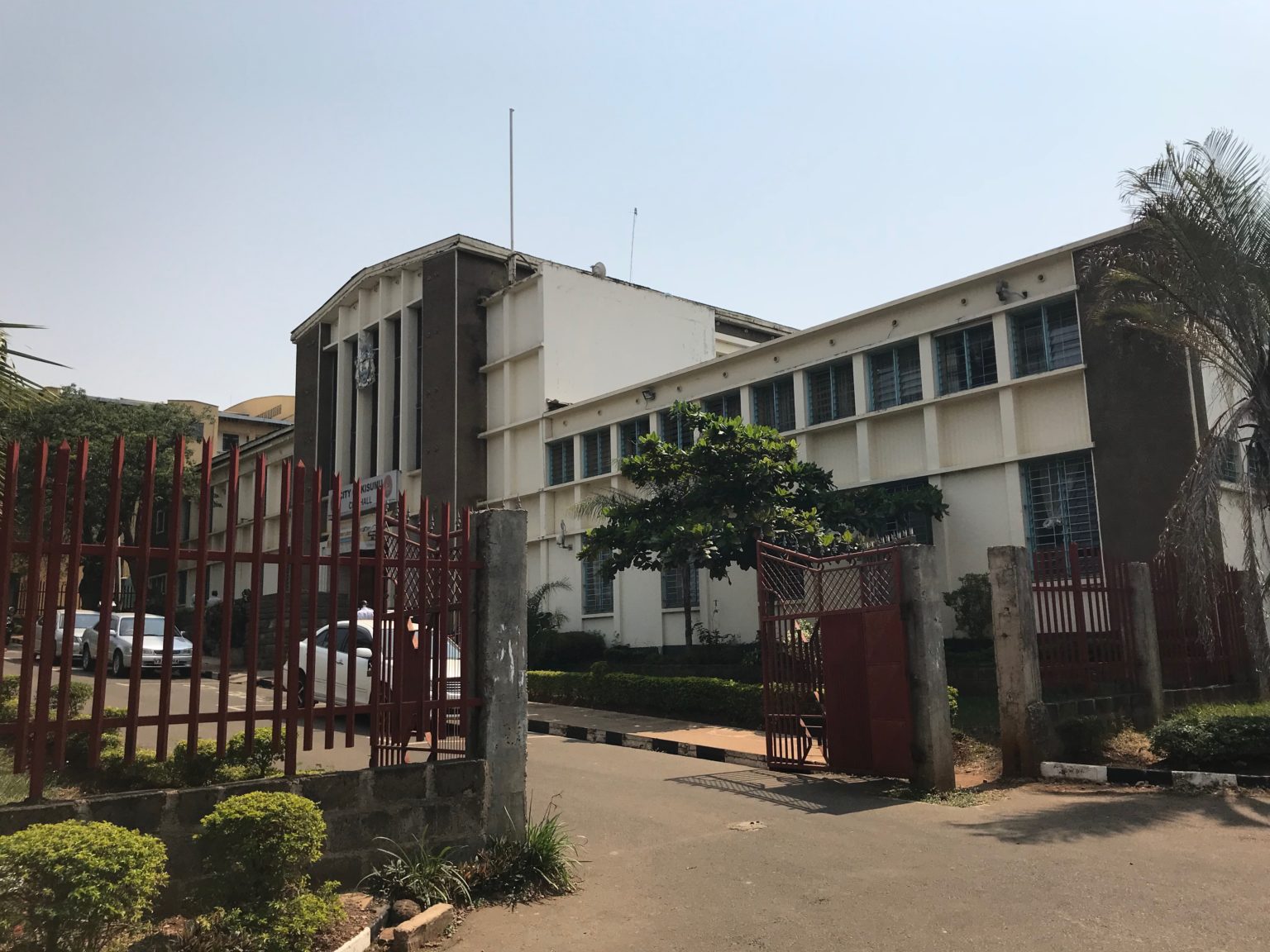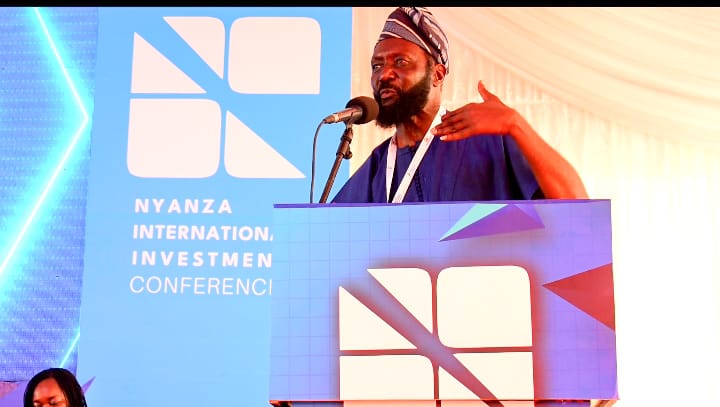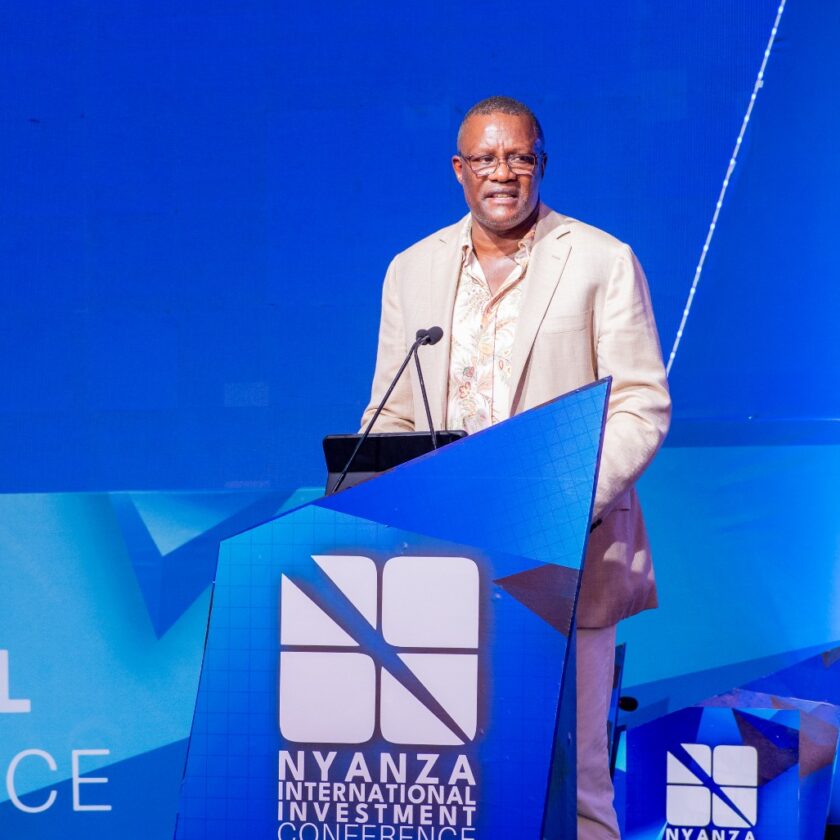THE FOUNDING OF THE AFRICAN SOCIAL HALL: THE MUNDERFIELD’S INFLUENCE IN THE GROWTH OF SPORTS, ARTS AND LITERARY APPRECIATION.
My short presentation explores the founding historical perspective of how this iconic monumental building, now known as Kisumu Social Centre, achieved its stardom in the field of Performing Arts, Public Education as well as public intellectual discourse. It also examines why this great towering cultural MONUMENT was associated with great African scholars.
The Colonial Government created the African Social hall to provide recreational amenities to the African(s) living in Kisumu. The foundation stone was laid on 3rd July 1957, by Mr. Stanley Everet Esq, then, the chair to the Municipal Board of Kisumu and the African Affairs Committee. The new Centre opened its gates to the public on 30th April 1960. This was a moment of splendor. The event was graced by H.C Sir Patrick Renison, KCMG, the Governor of the Colony and Protectorate of Kenya.
Mr. Munderfield was the first European Director to the Municipal board of Kisumu in charge of housing and Social Services. Prior to the construction of the African Social hall, his office was situated at the present day United Mall (Tuskys), a long green wooden structure. Part of the office was a nursery school which in the afternoon was turned into adult classes to fight illiteracy. Mr. Munderfield’s office was situated in the military camp comprising the new Posta estate, Joel Omino nursery school and Orange Democratic Movement (ODM’s) provincial headquarters.
Recast: The Helensy Stadium, which was later changed to Kisumu stadium, was situated at the current Kisumu Girls High School. It also was named Moi Stadium. Mr. Munderfield was passionate about the growth of Arts and Sports in Kisumu . These interests included, particularly, the development of volleyball, soccer and boxing. He was also involved in the founding of two great football clubs in Kenya known as the Central Nyanza FC and Kisumu Hotstars FC which were founded in 1962.
The pioneer founding players of Kisumu Hotstars were Daniel Anyanzwa, Dennis Olando, Dr. David Olima, Hussein Kuni, Peter Oronge, Owen Nandi, Tom Opiyo and Deya Nyagudi as the goal keeper.
WHY WAS THE CENTRE FOUNDED?
Mr. Mundefield founded the African Social Hall as a Centre for character training for young people, a recreational Centre to keep away the youth from mischief. It was also an innovative Centre for healthy exercise habits and, lastly, a Centre for the promotion of social and cultural activities.
From the African Social hall, Mr. Munderfield coordinated inter estate matters as well as the beautification of Kisumu town. From here, he also organized annual contests meant to enhance cleanliness of the town from the estate level. Mr. Gordon Rogo, a head teacher and councilor for Kaloleni estate, used to be the beautification winner.
The African Social Hall played a critical role as a medium of public information, education, cultural and artistic expressions as well as the general community development.
THE MUNDERFIELD’S STEWARDSHIP IN THE MANAGEMENT OF THE CENTRE
Mr. Munderfield molded the Centre as the epitome of Arts, Culture and scholarship, making it a Centre of excellence. He groomed many young artists and sports enthusiasts who rose to national prominence. He also supported some young players to acquire education and skills. The young people whom he was so passionate about became known as MUDERFIELD BOYS and they included: Mr. Apollo Ndeda who became the Stadium Manager for Kisumu/City Stadium, Mr. Peter Oronge, Mr. Charles Anyang, Mr. Munderfield also mentored young Africans who he worked with at the Center. They were Mr. Jeremiah Osore (Tipo Njugu) Mr. Owee as Sports Officer and Mr. Ezra Gumbe whom he groomed to take over from him as the first African director for the housing and Social services.
THE INTRODUCTION OF SPORTS ACTIVITIES.
Director Mundefield was keen on sports promotion and development. The Centre not only inspired creativity, innovation and public discourse on a varied range of developmental issues but also engaged the minds of the residents positively. He had a plan of action from January to December. The residents knew what to expect every season. The Centre had stimulating weekends. The African Social Centre, provided aspirations for innovations, creativity and intellectual growth, molding all and sundry as it was founded on the premise of nothing but excellence. It was a centre of excellence.
THE CREATION OF THE PIONEER AFRICAN NURSERY SCHOOL.
The Municipal Board of Kisumu created a pioneer Nursery school which was also started at the Munderfield green wooden structure, then at the current United Mall. The Nursery was also a multipurpose Centre. It also accommodated adult learners in the evenings. The first nursery school teacher in Kisumu town was Madam Zilpa Obara. She was the headmistress and was assisted by Madam Mary Onyulo, the second wife to Hon. G.N Onyulo “ywech manyien” the former MP for Winam Constituency. The school had only three teachers and about 30 pupils who were some of the pioneer nursery school pupils then, Mr. Barrack Aduwo, who later rose to become the District Commissioner for Busia and Nyamira Districts and Prof. Khama Rogo later to work with the World Bank (USA).
The Nursery was later moved to the African Social hall where Mr. Munderfield’s new office was. After the death of Alderman Councilor Mathews Ondiek (First African Mayor In Kisumu) took over. The Nursery School was moved from the African social hall to its present position at Ondiek estate (Mathews Ondiek Nursery School and Primary School) the new School was commemorated in honor of the first African Mayor in Kenya.
THE ARMS BAR: THE FIRST AFRICAN ELITE BAR
The arms bar was a pub for a class of people: the Kisumu elites. It was owned by the first woman entrepreneur in Kisumu known as Mama Teresa Ondiek, who resided at Nyawita market. This was a bar for the elite ladies and gentlemen of the town.
THE STIMULATING WEEKEND ENTERTAINMENTS.
Mr. Mundefield created the Centre to provide space for stimulating entertainments. It used to host live music concerts – some of the greatest foreign musicians used to perform at the Centre. They included:
- EDUARDO MASSENGO
- JEAN MWENDA BOSCO.
- PASCAL ONEMA OF AIR BANTOU later based in Kisumu.
The duo hailed from Congo and were very popular in the East African region. The duo took Kisumu by storm. Then, the dancers had a dress code. The gentlemen were attired in black suits, sailors coat, white shirts, white handkerchiefs and black pointed shoes. The ladies were adorned in long smart dresses, hair plaited in lines and they also had white handkerchiefs. This is easily comparable to the sapoeur movement in Congo where artists adorned tasteful and fanciful attire. The dance styles, then, were from Latin America – Rhumba, bolero, chachacha and pachanga. These foreign dances required calculated footwork and dance steps. The dances had artistic styles and rules, for example, no stepping on ladies toes. These dances thus required serious calculations and well-timed dance steps.
THE CHANGE OF THE NAME FROM THE AFRICAN SOCIAL HALL TO VICTORIA SOCIAL HALL.
What prompted the Municipal Board of Kisumu and the African Affairs Committee to change the name of the African Social Hall to Victoria Social Hall in the early 1960’s? After independence, it was changed to Kisumu Social Centre under the stewardship of Mr. Ezra Gumbe.
What prompted the change of the name from THE AFRICAN SOCIAL HALL TO VICTORIA SOCIAL HALL? A bizarre occurrence happened in Kisumu town before independence. The name African Social hall generated racial animosity between the two protagonists namely, the Africans and the Asians over the use of the newly created space. The Africans believed that the African social hall was theirs by right and therefore, should not be used by Asians, whom they believed, then, were foreigners. The Asians had a convention in Kisumu town. The community had approached Mr. Munderfield, then the director of the Housing and Social Services, to book space for their convention at the Centre. This did not augur well with the Africans in Kisumu town. A fight ensued between the two protagonists, the Africans and the Asians. Word went round that the Asians had usurped their space (African Social Hall). Kaloleni and Nyalenda, being closer to town, their residents invaded the space and destroyed the Asian’s convention property that were at the hall. It was the first and the last fight between Africans and Asians over the occupancy of the social centre.
After this sad incident, the Asian’s vowed never to use the space again. And they never did. The African Affairs Committee under the stewardship of Mr. Everett Stanley, who later became the first Mayor of Kisumu, therefore made a decision to change the name to a universally accommodative name. They settled on the name Victoria Social Hall, renamed after Queen Victoria, the Queen mother of England.
Queen Victoria died in 1901, time when the Uganda Railway line had reached Kisumu. During the colonial era, Kenya was a racially stratified society. The whites were number 1 , Asians number 2, Arabs number 3, and Africans on the bottom at number 4. The Victoria Social Hall was short lived. Kenya’s independence was looming. Mr. Munderfield had prepared Mr. Ezra Gumbe to take over as a new Director. Mr. Consequently, Mr. Gumbe became the first African Director for Housing and Social Services in Kisumu. After independence, the name Victoria Social hall was also again changed to Kisumu Social Centre.
THE CREATION OF THE KISUMU SOCIAL CENTRE.
When the Africans took over the management of the Kisumu Social Centre, an advisory committee was founded to assist Mr. Ezra Gumbe, the Director, to take the Centre to the next level. The Advisory Committee consisted of Mr. James Miruka Owuor, the first African Town Clerk, Prof. Okot p’Bitek of the University of Nairobi (Extra Mural College), Mr. Abdul E Dahya, the Deputy Mayor of Kisumu Town and Bishop Henry Okullu. They intended to promote intellectualism in Kisumu, artistic and cultural growth in the town. They worked hard to convert the space into a hub of intellectual growth through weekly public lectures, artistic and cultural expressions. This made the Centre the citadel of public learning and heritage. Mr. Nelson Ogombe was the organizer of the weekly public lectures.
PUBLIC EDUCATION AND INTELLECTUAL GROWTH
The Kisumu Social Centre was a multipurpose Centre known for its richness in creativity, cultural and heritage and social development. It not only promoted public education but also sporting, artistic and cultural expressions. Kisumu Social Centre was a thundering monument, a melting pot of intellectual expression which witnessed great foreign academicians pitching tent at the Centre to deliver keynote lectures on various topical issues. These included: Prof. David Rubadiri from Malawi, Prof. Chinua Achebe from Nigeria and Prof. Okot p’Bitek from Uganda. The Centre also accommodated eminent Kenyan scholars. Prof. David Wasawo, the first African Professor in Kenya. Prof. B.A Ogot, a renowned African Historian, Prof Ali Mazrui, Prof. Simeon Ominde, Prof. Okoth Ogendo, Prof. Atieno Odhiambo and Prof Obwaka.
The Space was a centre of splendour and a forum for intellectual and artistic excellence. Every Thursdays, the Centre was packed to the brim with the residents yearning for more knowledge through public lectures and presentations. Mr. Nelson Ogombe was credited for such great feats, particularly in the knowledge transfer through public engagements. Indeed it was a long and fruitful journey. The director, Mr. Ezra Gumbe, worked in harmony with the advisory team.
KISUMU SOCIAL CENTRE AND SPORTING ACTIVITIES
Under the stewardship of Mr. Munderfield, the Kisumu Social Centre was fully equipped with various sporting facilities. It had both indoor and outdoor games.
INDOOR GAMES included Ludo, snakes and ladders, badminton, tennis court, droughts and boxing. A boxing ring was constructed at the pavilion. It was a standard 18×18 with complete boxing equipment. The Centre made boxing as a very popular sport in town. During the initial period, boxing was under the management of Mr. Peter Oronge and assisted by Mr. Deya Nyagudi. Later Mr. Mundefield realized that Mr. Peter Oronge was more gifted in the art of Soccer. He therefore Introduced Oronge to soccer. Oronge, as a Coach, mentored some of the most exciting and memorable soccer stars Kisumu town had ever produced. They included Dr. David Olima, John Rabugi, Owen Nandi, Archibald Nandi and David Anyanzwa. Oronge, Anyanzwa and Rabuogi later played for the Kenyan National Football Team
THE OUTDOOR GAMES
The Kisumu Social Centre in the past had, at its disposal, an extensive space for the outdoor games and parking lot. It occupied the present day Khetia’s Super market and space next to the present day Taratibu restaurant. Mr. Munderfield introduced volleyball and netball. The space accommodated the two volley ball pitches and a netball pitch. Volleyball and netball games were very popular and every evening young sports enthusiasts were being trained on the new techniques of volleyball playing. In 1969, the Russian Doctors based at the newly constructed Russian General Hospital, now Jaramogi Oginga Odinga Teaching and Referral Hospital, used to train sports enthusiasts in volleyball playing. They introduced the art of professional volleyball playing, making Kisumu town the volleyball town in Kenya.
THE KISUMU SOCIAL CENTRE AND FOOTBALL DEVELOPMENT
Mr. Munderfield had identified Mr. Peter Bob Oronge as one endowed in Soccer wizardry. He was the soccer coach at a time when Kisumu stadium (now Moi Stadium) was being managed by Mr. Apollo Ndeda. The Centre mentored the best in both indoor and outdoor games propelling them to the national stage.
READING CULTURE DEVELOPMENT (CLUB ROOM).
The Social Centre was a multipurpose Centre. The present club room in the past was the first Kisumu Library, a precursor to Kenya National Library Services (Kisumu Area Library). There were books that were reference material and could not therefore be borrowed. it was a reading Centre promoting a reading culture. Kisumu Social center propelled young people to excel in their studies and to appreciate literary works. Within the club room, there was also a piano – to train music enthusiasts.
TV SCREENNING, RADIO ENTERTAINMENT.
The Centre had a Public audience. The screening was done every evening. It also had a public radio which was boomed through a public address system. Speakers were placed outside the Centre to provide public listening entertainments. The radio broadcasts could reach as far and wide for there were few buildings in Kisumu by then. The Council also provided effective housing and social services. It was then a monument that thundered in terms of arts and intellectual growth. The Centre also served as a venue for educational extra – curricular activities i.e Music and Drama Festivals in Western Kenya, making Kisumu the cultural town of East and Central Africa.
LUO STUDENTS UNIVERSITY LEAGUE SYMPOSIUM.
The Centre used to host the annual Luo Students Universities League symposium.
The annual festival used to feature Luo students and lectures from Makerere (Uganda), Dar es Salaam (Tanzania) and Nairobi. The festival used to feature performing arts, symposium and end year ball.The forum used to celebrate diverse cultural heritage of the region. This was also end year intellectual growth and development – making Kisumu the citadel of arts.
THE ARTISTIC GROWTH
The Kisumu Social Centre provided the impetus for the artistic and cultural growth. It was a Centre for excellence no mediocre productions could be hosted at the Centre. Mr. Ezra Gumbe was a man of style and excellence. He planted the mustard seed of excellence in the arts through stimulating performances during week-ends and discourse at the Centre.
THE DEVELOPMENT OF PERFORMING ARTS IN KENYA.
Prof. Okot p’Bitek introduced creative performing arts in Kisumu town at the Kisumu Social Centre. He literally transformed Kisumu Social Centre to be a towering monument for not only literary expressions but also for artistic and cultural growth through the advisory committee that worked closely with the Director, Mr. Ezra Gumbe.
THE PIONEER THEATRE COMPANIES IN KISUMU.
The pioneer theatre companies in Kisumu town were associated with the Centre. The Kisumu British Council Library played a critical role in the literary appreciation and talent development in the field of performing Arts. The two groups were:
- Kisumu Dramatic Society
- The William Shakespeare Club
The theatre companies also played a pivotal role in the promotion of English literature in shaping literature in English culture, scholarship and politics in Africa.
THE ENTRY OF RAMOGI WRITERS AND DRAMA SOCIETY.
In 1980, a youth literary movement was founded in Kisumu town known as Ramogi Writers and Drama Society to rekindle the vision and Mission of Okot p’Bitek. I was part of this movement. In 1982 Ramogi Writers and Drama society appeared to be the only theatrical beacons in an otherwise dark and fathomless sea that Kenya theatre had at one time sunk to. The organization performed at the Goethe Institute in Nairobi, and transformed the British Council Library into a cultural Centre – hosting the first English – Kisumu Cultural exchange performances at the Kisumu Social Centre and the British Council – hosting Arts opportunity theater from Bristol, England. At the Kisumu Social Centre, the organization founded the Kisumu – CHELTENHAM Youth Exchange program. This Program facilitated international exchange between Kisumu and England.
Lastly Ramogi Writers and Drama Society founded the KISUMU – CHELTENHAM SISTER CITIES Cooperation at the Kisumu Social Hall Centre. In 1986, Ramogi Writers it became the first theater Company from East and Central Africa to participate at the WOMAD festival in Bristol – England.
THE MISANGO ARTS ENSEMBLE.
In 1987, Misango (meaning sacrifice in Dholuo) was founded. Misango was a new theatrical entity in Kisumu established to advance theatre that engages the audience with social issues and social justice. The organization was founded to create space for a unique artistic platform for serious educative and entertainment movements to use social transformative tools to provoke society in a subtle way.
At the Social Centre,it has hosted various international theatre companies from USA, Russia and Sweden. In 2006, Misango was selected to participate at the World’s Aids Congress in Toronto Canada.
THE NEW CENTRE, A BEACON OF HOPE.
The newly refurbished Kisumu Social Centre is now the beacon of hope for the Kisumu artists. It will rekindle Kisumu town’s old glory by propelling great scholars, artists and film makers to come to Kisumu City again. Kisumu Social Centre, the iconic monument with splendour that used to thunder within East and Central Africa – The new Kisumu Social Hall Centre. should inspire this dream again.
THE KISUMU CONVENTION (15TH – 17TH DECEMBER 1993): ACTIONS TO RESTORE THE PAST GLORY OF KISUMU TOWN.
Prof. Peter Anyang Nyongo, the MP for Kisumu rural in 1993, asserted that “in holding the Kisumu Convention, we were all convinced that Kisumu town need not look as bad as it looks today since it was once much better looking”.
The breakdown in the service delivery is not only accidental; it has come as a result of greed, corruption, selfishness, and lack of foresight. Corrupt officials in public office making bad decisions and charged with the responsibility of managing the Municipal Council of Kisumu should not occupy office. The Kisumu convention was therefore a moment to reflect on the past, the present and plan realistically for the future. Prof Nyong’o started dreaming of the refurbishment of the centre in 1993, through the medium of Kisumu Convention.
THE SOCIAL SERVICES AND CULTURAL WELFARE COMMITTEE.
I was the chair to the Social Services and Cultural Welfare committee (Kisumu Convention, in 1993). The Committee’s core mandate was to examine why Kisumu town had degenerated in the provision of Social Services and why Kisumu Social Centre had sunk low in the 1990’s. Kisumu had become a dull town as residents had limited avenues of creative, mature and stimulating entertainments, living only football, alcohol and sex as the only forms of social expressions . This is because Kisumu Social Centre died.
Kisumu town had lost its old glory. The iconic cultural monument that was associated with scholarship had been turned into a full-fledged bar, live music, discos and Ohangla Music. It became a no go zone for Children who used the facility for sporting for character development – The Art died in Kisumu.
THE NEW KISUMU SOCIAL CENTRE
As artists, we envisage a new space for creativity and cultural expressions and sporting activities. We hope it will inspire a new generation of young artistes to take Kisumu to the next level. The Governor Nyong’o was only able to resurrect the Centre in 2020, when the Centre became Mama Grace Onyango Social Centre.
CONCLUSION
They say literature is like chess – for it’s a game of intellect and Kisumu Social Centre provided the impetus for the intellectual development. It also provided a forum for youth mentorship and practical skills. In the past, The Centre engendered a sense of national pride – for it was associated with excellence that made Kisumu a melting point of Arts and Culture. The artistic and cultural journey at the Kisumu Social hall Centre has been long indeed.
The artistic and cultural journey at the Centre has been long indeed; yet our resilience has remained unbroken. The artistry (artistic) blood from the Kisumu Social Centre has still been flowing within our veins.
AKECH OBAT MASIRA
DIRECTOR, MISANGO ARTS ENSEMBLE
9TH October, 2020
MAMA GRACE ONYANGO SOCIAL HALL




